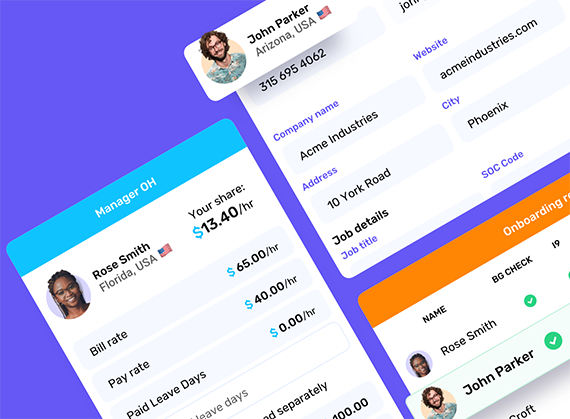As the world of work evolves, businesses are increasingly relying on a contingent workforce to remain agile and competitive. A contingent workforce includes temporary, part-time, freelance, and contract workers who are not permanently employed by a company. Managing this diverse group of professionals requires a unique approach that balances flexibility with compliance, efficiency with engagement. Here are some best practices for effectively managing a contingent workforce.
Best Practices
1. Define Clear Roles and Expectations
One of the most crucial steps in managing a contingent workforce is clearly defining the roles and expectations for each worker. This includes outlining job responsibilities, performance metrics, and expected outcomes. Providing detailed job descriptions helps avoid confusion and ensures that contingent workers understand their contributions to the organization.
2. Implement Robust Onboarding Processes
Onboarding is just as important for contingent workers as it is for full-time employees. A structured onboarding process helps temporary staff quickly acclimate to the company culture, understand their roles, and access necessary resources. Utilize digital tools and platforms for seamless onboarding, including virtual orientations and training sessions.
3. Maintain Compliance with Labor Laws
Compliance is a critical aspect of managing a contingent workforce. Different types of contingent workers may be subject to varying labor laws and regulations. It’s essential to stay informed about classification rules, tax obligations, and employment laws to avoid legal pitfalls. Partnering with an Employer of Record (EOR) can simplify compliance by handling payroll, taxes, and legal matters on behalf of the company.
4. Leverage Technology for Efficient Management
Technology plays a pivotal role in managing a contingent workforce. From project management tools to time-tracking software, technology can streamline operations and enhance communication. API-driven solutions, for instance, can integrate various HR and payroll systems, providing a seamless experience for both the company and contingent workers.
5. Foster Inclusion and Engagement
Contingent workers should feel valued and included as part of the team, even if they are not permanent employees. Encourage team leaders to integrate contingent workers into team meetings, social events, and company communications. Recognizing their contributions and providing opportunities for professional growth can boost morale and retention.
6. Establish Clear Communication Channels
Effective communication is key to managing a contingent workforce. Establish clear communication channels and protocols to ensure that contingent workers receive timely information and updates. Utilize digital platforms like Slack or Microsoft Teams for real-time communication and collaboration.
7. Monitor and Evaluate Performance
Regularly monitoring and evaluating the performance of contingent workers is essential for maintaining high standards. Use performance metrics and feedback mechanisms to assess their contributions. Providing constructive feedback helps contingent workers improve their performance and align with company goals.
8. Plan for Continuity and Knowledge Transfer
Given the temporary nature of contingent work, it’s important to plan for continuity and knowledge transfer. Develop processes for documenting and sharing knowledge to ensure that critical information is retained within the organization. This can include creating standard operating procedures, maintaining a knowledge base, and facilitating handover processes.
9. Consider Long-Term Relationships
While contingent workers are typically hired for short-term projects, building long-term relationships with high-performing individuals can be beneficial. Consider creating a talent pool of trusted contingent workers who can be called upon for future projects. This not only saves time in recruitment but also ensures a reliable quality of work.
10. Evaluate Compensation and Benefits
Competitive compensation and benefits are essential for attracting and retaining top talent in the contingent workforce. While traditional benefits may not always apply, consider offering modern solutions like flexible schedules, remote work options, and access to professional development resources. Leveraging EOR providers like FoxHire can also provide contingent workers with access to benefits such as health insurance and retirement plans.
Next Steps to Manage a Contingent Workforce
In conclusion, managing a contingent workforce requires a strategic approach that balances flexibility with structure. By implementing these best practices, businesses can effectively manage their contingent talent, ensuring compliance, fostering engagement, and achieving organizational goals. Whether you’re working with freelancers, contractors, or temporary employees, a well-managed contingent workforce can be a valuable asset to your company’s success.





